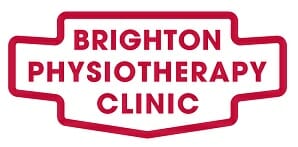Treatment for Head Injuries
The head is the most important part of the body. It houses the brain, which is about the most complex organ of the body. But the head is made of bones and soft tissues, which make it very susceptible to musculoskeletal pain when faced with certain injuries. Other parts of the head such as the forehead, ears, cheeks, chin, mouth, and nose can develop conditions requiring medical intervention.
With osteopathy, some of these injuries are treated. Osteopathy also treats common head conditions that can be sustained through falls or other forms of sickness.
What Head Conditions Can Be Treated with Osteopathy?
Migraines and Acute Headaches
A migraine is a headache disorder that causes a throbbing sensation in one part of the head. This can be accompanied by intense pain, nausea, and sensitivity to light and sound. While the pain is most times made worse with physical activity, there is no specific cause for migraines. The migraine may be hemiplegic, menstrual, or abdominal in some cases.
Osteopathy reduces the frequency of attacks and also eliminates physiological triggers. Combined with analgesics, osteopathy helps with the pain, offering a wholesome treatment for Migraine.
Vertigo
Vertigo is a head condition that is similar to dizziness but causes the illusion of movement. It feels like a swaying or spinning movement, which can be accompanied by vomiting, nausea, or even horizontal nystagmus. Common causes of vertigo include labyrinthitis, migraines, stroke, and trauma to the head.
Treatment for vertigo depends on the cause. But manual therapy and osteopathic manipulative medicine are helpful in most cases.

Cervical Radiculopathy
Radiculopathy is an irritation of the nerves at the back of the body caused by spinal nerve compression. This leads to radicular pain and improper functioning of nerves. Cervical radiculopathy refers to the form of radiculopathy that occurs in the cervical region of the body. It causes pain in the neck and upper back.
Osteopathy and chiropractic treatment helps to stretch the muscles of the neck, decompressing the nerves and restoring full functions.
Cervical Facet Syndrome
Facet syndrome is a degeneration of the facet joints responsible for bending and twisting. This causes arthritic pain and inflammation. Cervical facet syndrome refers to arthritis that occurs at the cervical vertebrae joints. This is responsible for arthritic pain felt in the neck and upper back.
Osteopathy is generally recommended alongside proper medications for facet syndrome. It relieves the pain and also stabilizes the cervical joints.
TMJ Dysfunction
Temporomandibular Joint Dysfunction (TMJ) refers to the dysfunction of the muscles of the jaw. The dysfunction causes pain and restricted mandibular movement. The exact cause of TMJ dysfunction is unknown, but the condition can become chronic if not managed properly.
Treatments such as cognitive behavioural therapy and physiotherapy help to improve symptoms and reduce pain. Proper manipulation, mobilization, and manual therapy also help to restore use of the jaw.
Chronic Ear Infections
Chronic ear infections are mostly seen in infants and young adolescents. They occur due to the underdeveloped middle ear and the head’s inability to drain fluids properly from the ear. These fluids cause infections when left in the ear for too long, leading to difficulty hearing and loss of balance.
With cranial osteopathy and proper manipulation, these fluids in the ear can be drained. Pain developed via the condition is also reduced.

Best Osteopathic Care for the Head
With osteopathic care, you can get relief from pain and other symptoms of head conditions. Proper mobilisation also prevents the occurrence of common conditions like acute headaches and migraines. Contact us for a proper assessment of the head condition and to commence therapy immediately.
